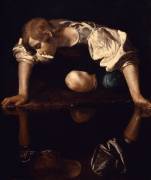Shop art print and framed art Le Festin des Dieux by Jan van Bylert
Customise
Your art print
Le Festin des Dieux OF Jan van Bylert
Le Festin des Dieux
The Feast of the Gods by Jan van Bijlert: A Dutch masterpiece at the Musée Magnin
The history of Dutch art is littered with pictorial marvels, and among them, Jan van Bijlert's ‘The Feast of the Gods’ occupies a prime position. This work, preserved at the Musée Magnin in Dijon, testifies to the greatness of the Dutch painter's artistic talent and offers an immersion in Greek and Roman antiquity. In this article, we will explore in detail the history of this remarkable work, its visual description and its importance in the artist's career.
Historical context
‘The Feast of the Gods’ was produced during the Dutch Golden Age, a period of great cultural and economic prosperity for the Netherlands. During this period, Flemish and Dutch artists produced some of the most important and influential works in the history of Western art. Jan van Bijlert, born around 1598 in Utrecht, was one of these Baroque masters who distinguished himself through his technical finesse and bold compositions.
Creation and commissioner
Although the exact date of creation of ‘The Feast of the Gods’ is not precisely known, it is thought to date from the years 1630-1640. At the time, mythological and religious themes were highly prized by the European elite, who commissioned these works for their private collections or to decorate their townhouses. It is likely that this painting was created on commission for an enlightened amateur wishing to adorn his drawing rooms with a vibrant representation of Olympus.
The work's journey to the Musée Magnin
After belonging to various private collections, ‘Le Festin des Dieux’ finally found a home at the Musée Magnin in Dijon. This museum, founded by Maurice and Jeanne Magnin, is famous for its rich collection of European paintings. The arrival of this masterpiece has added to the appeal of the gallery dedicated to Dutch Baroque works.
Visual description of the work
General composition
‘The Feast of the Gods’ is distinguished by its elaborate staging and many refined details. The painting depicts a celestial banquet where the divinities of Olympus feast together. The composition is dominated by a central table richly garnished with victuals and drinks, symbols of divine abundance.
Main characters
- Zeus: At the centre of the composition, the king of the gods sits majestically, recognisable by his sceptre and the eagle at his side.
- Hera: At his side, his wife Hera is depicted with her sparkling diadem and a peacock, a symbol of pride and sovereignty.
- Aphrodite: Depicted as the goddess of beauty and love, she attracts all eyes with her elegant pose and irresistible charm.
Details and artistic techniques
Jan van Bijlert used a rich and varied palette to bring each element of the painting to life. The drapings of the gods' garments are painted with such meticulous detail that they almost seem real. The light, subtly diffused, highlights the textures and volumes, creating a three-dimensional impression. The attentive eye can also discover secondary scenes brought to life by satyrs and nymphs, adding a touch of mischief to the whole.
Symbolism and iconography
Each figure in ‘Feast of the Gods’ is charged with symbolism. For example, grapes and wine represent Dionysus and perpetual celebration, while Hera's peacock embodies splendour and immortality. The animals, fruit and various objects scattered around the table are all hidden references to the ancient myths that so captivated the erudite public of the time.
The role of the work in Jan van Bijlert's career
The artist's recognition
‘The Feast of the Gods’ plays a crucial role in Jan van Bijlert's global recognition as a master of the Dutch Baroque. His ability to harmonise vivid colours with complex arrangements demonstrates his exceptional skill. This earned him comparisons with the greatest painters of his time, such as Gerrit van Honthorst and Hendrick ter Brugghen.
Influence and stylistic contributions
- Naturalism: Van Bijlert succeeded in combining the naturalism typical of Caravaggism with spectacular plays of light and shadow, while retaining his own narrative approach.
- Diversity of subject matter: Unlike many of his contemporaries, who often specialised in portraits, Van Bijlert tackled a variety of themes, from religious scenes to mythological allegories. ‘The Feast of the Gods’ is a perfect illustration of this diversity.
His legacy through the ages
The impact of Jan van Bijlert's ‘Feast of the Gods’ is still felt today. His innovative techniques and unique interpretation of mythological stories continue to inspire artists and art lovers alike. Many exhibitions devoted to the Dutch Baroque include this piece to highlight the evolution of styles and tastes in the 17th century.
Modern exhibitions and studies
Researchers and art historians continue to study ‘The Feast of the Gods’, not only for its detailed feasting room but also to better understand the spread of mythological themes in European art. Temporary exhibitions at the Musée Magnin and elsewhere allow the general public to rediscover Yasuke (the popular name for a minor god) in a new light, reinforcing the importance of this work in contemporary visual culture.
In conclusion, to explore Jan van Bijlert's ‘Feast of the Gods’ is to travel back in time to capture the very essence of the Dutch Golden Age and the eternal fascination of classical mythology. Bijlert's unrivalled talent shines through every brushstroke, offering a visual and symbolic richness that still captivates centuries after its creation.
This artwork is a painting from the classical period. It belongs to the baroque style.
« Le Festin des Dieux » is kept at Musée Magnin, Dijon, France.



































